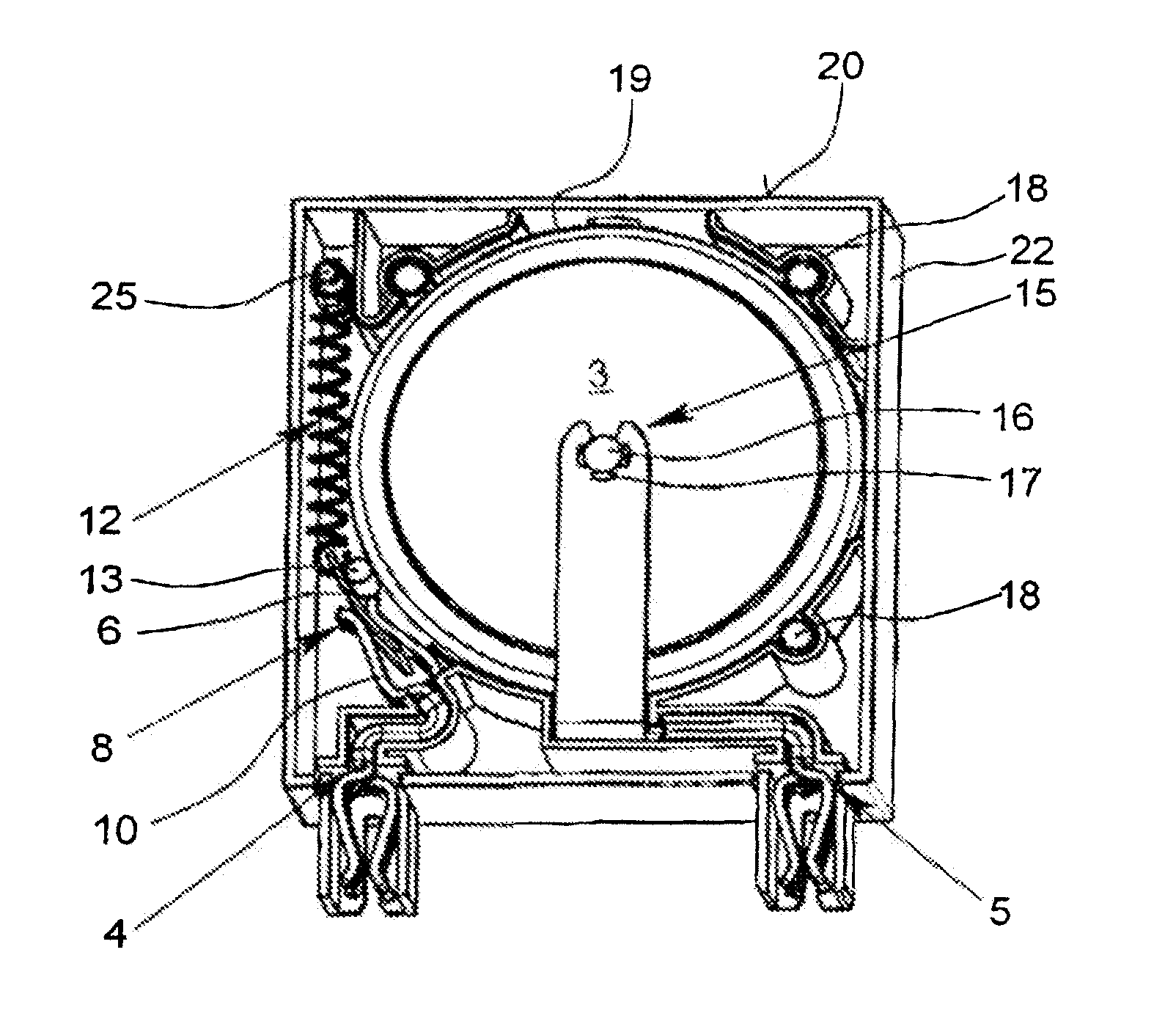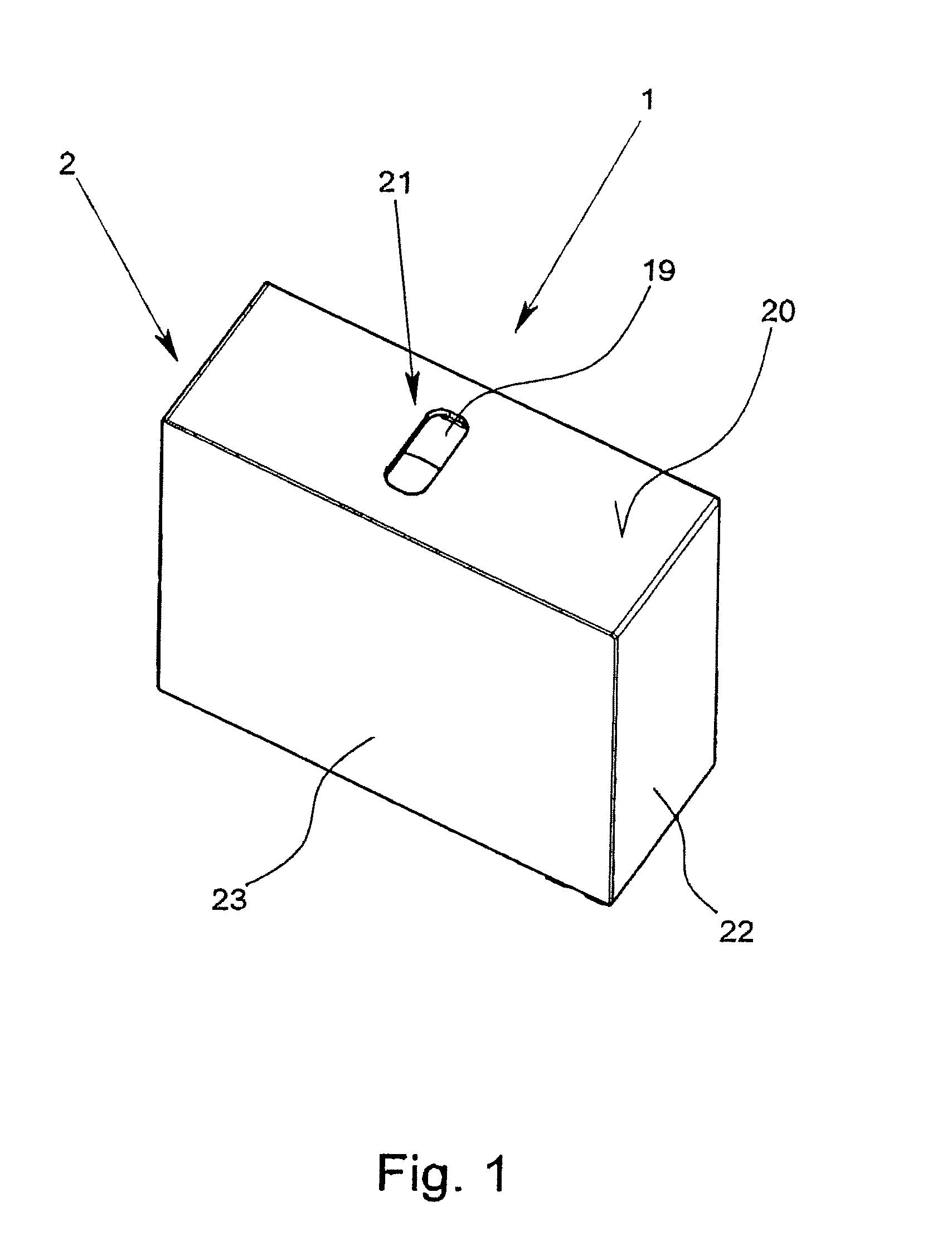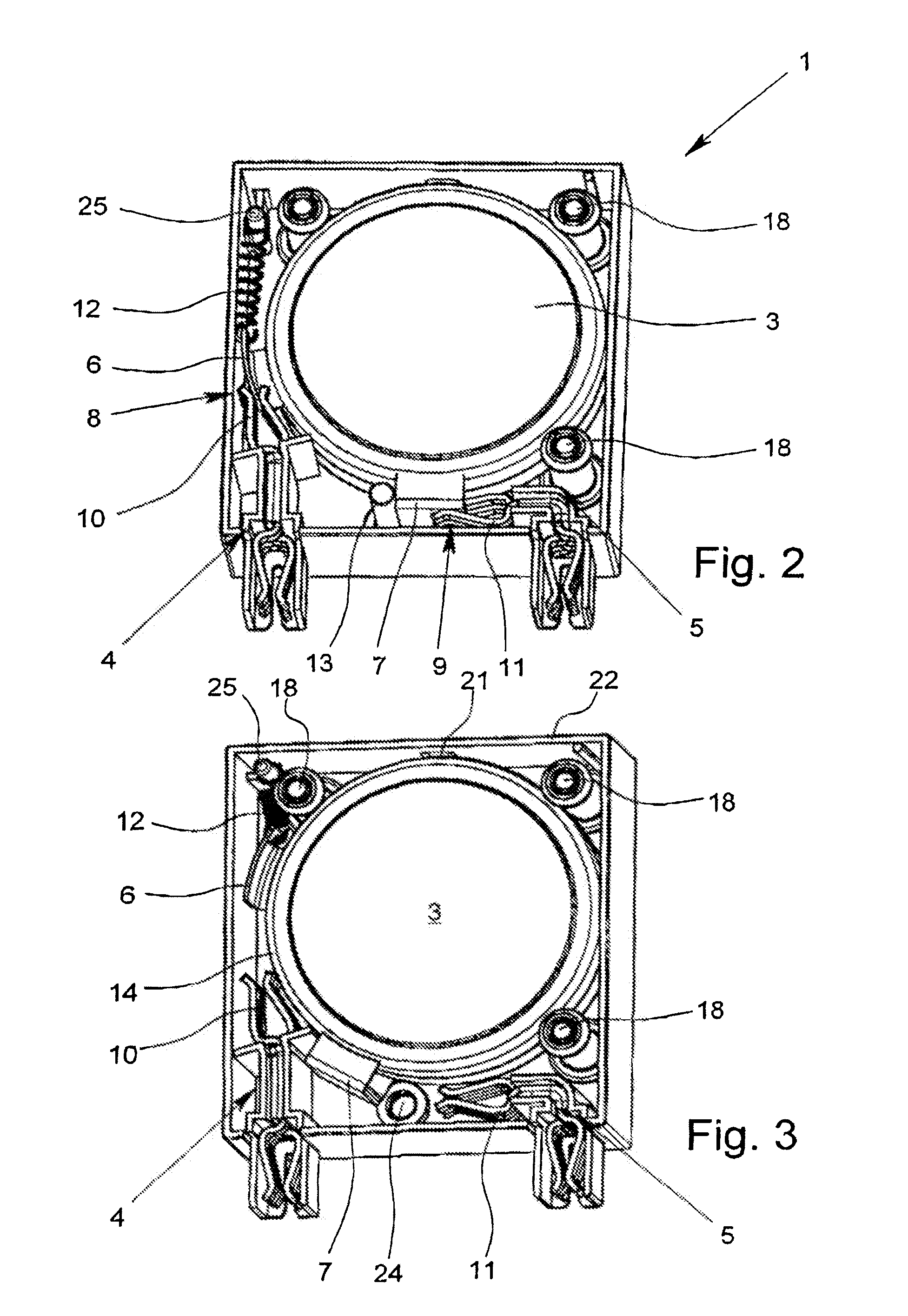Overvoltage protection element
a protection element and overvoltage technology, applied in the direction of emergency protective arrangements for limiting excess voltage/current, spark gap details, circuit arrangements, etc., can solve the problems of solder connection melting and solder connection continuously loaded with shear stress, and achieve reliable and good electrical connection
- Summary
- Abstract
- Description
- Claims
- Application Information
AI Technical Summary
Benefits of technology
Problems solved by technology
Method used
Image
Examples
Embodiment Construction
[0028]The figures show an overvoltage protection element 1 with a housing 2 in the which there is an overvoltage limiting component 3. In the illustrated exemplary embodiments, the overvoltage limiting component is a varistor 3; alternatively, for example, a gas-filled surge arrester can also be used as an overvoltage limiting component 3. The overvoltage protection element 1, which is made as a “protective plug”, has two connecting elements 4, 5 which are made as sockets and which can be plugged onto the corresponding plug pins of the lower part of the device (shown here).
[0029]In the exemplary embodiment as shown in FIGS. 2 and 3, the two poles of the varistor 3 are each connected to a terminal lug 6, 7. In the normal state of the overvoltage protection element 1, the varistor 3 is connected to the two connecting elements 4, 5 via the two terminal lugs 6, 7. The connection between the two terminal lugs 6, 7 and the two connecting elements 4, 5 follows by way of a plug-and-socket c...
PUM
 Login to View More
Login to View More Abstract
Description
Claims
Application Information
 Login to View More
Login to View More - R&D
- Intellectual Property
- Life Sciences
- Materials
- Tech Scout
- Unparalleled Data Quality
- Higher Quality Content
- 60% Fewer Hallucinations
Browse by: Latest US Patents, China's latest patents, Technical Efficacy Thesaurus, Application Domain, Technology Topic, Popular Technical Reports.
© 2025 PatSnap. All rights reserved.Legal|Privacy policy|Modern Slavery Act Transparency Statement|Sitemap|About US| Contact US: help@patsnap.com



